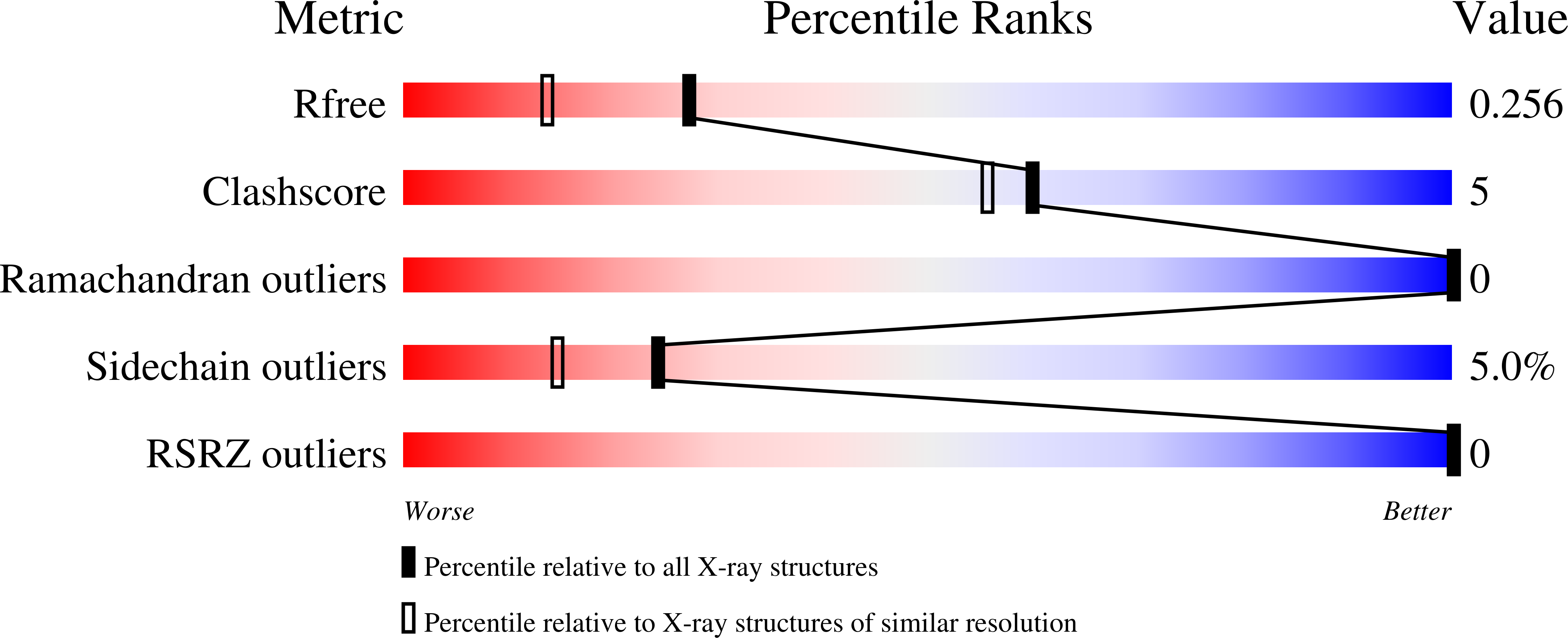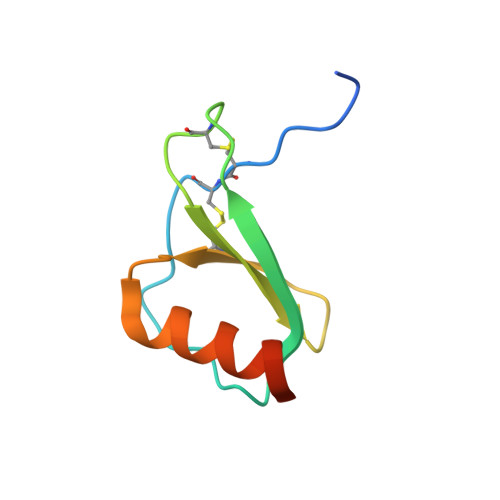Synthesis by native chemical ligation and crystal structure of human CCL2.
Grygiel, T.L., Teplyakov, A., Obmolova, G., Stowell, N., Holland, R., Nemeth, J.F., Pomerantz, S.C., Kruszynski, M., Gilliland, G.L.(2010) Biopolymers 94: 350-359
- PubMed: 20091676
- DOI: https://doi.org/10.1002/bip.21390
- Primary Citation of Related Structures:
3IFD - PubMed Abstract:
The protein human CC chemokine ligand 2 (CCL2, also known as monocyte chemoattractant protein 1 or MCP-1) has been synthesized using a combination of solid phase peptide synthesis (SPPS) and native chemical ligation (NCL). The thioester-peptide segment was synthesized using the sulfonamide safety-catch linker and 9-fluorenylmethoxycarbonyl (Fmoc) SPPS, and pseudoproline dipeptides were used to facilitate the synthesis of both CCL2 fragments. After assembly of the full-length peptide chain by NCL, a glutathione redox buffer was used to fold and oxidize the CCL2 protein. Synthetic human CCL2 binds to and activates the CCR2 receptor on THP-1 cells, as expected. CCL2 was crystallized and the structure was determined by X-ray diffraction at 1.9-A resolution. The structure of the synthetic protein is very similar to that of a previously reported structure of recombinant human CCL2, although the crystal form is different. The functional CCL2 dimer for the crystal structure reported here is formed around a crystallographic twofold axis. The dimer interface involves residues Val9-Thr10-Cys11, which form an intersubunit antiparallel beta-sheet. Comparison of the CCL2 dimers in different crystal forms indicates a significant flexibility of the quaternary structure. To our knowledge, this is one of the first crystal structures of a protein prepared using the sulfonamide safety-catch linker and NCL.
Organizational Affiliation:
Centocor Research and Development, Inc., Radnor, PA 19087, USA. grygieltlr@yahoo.com
















